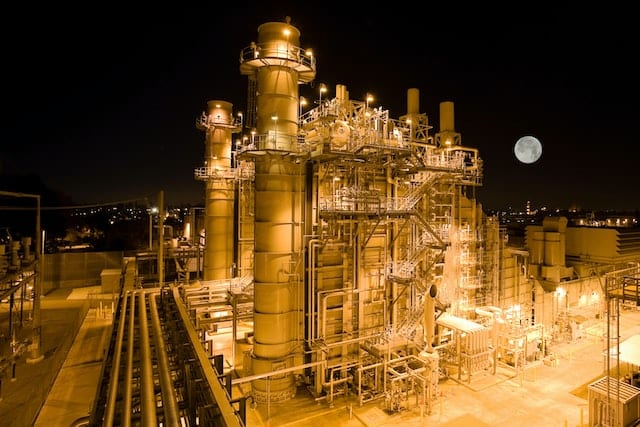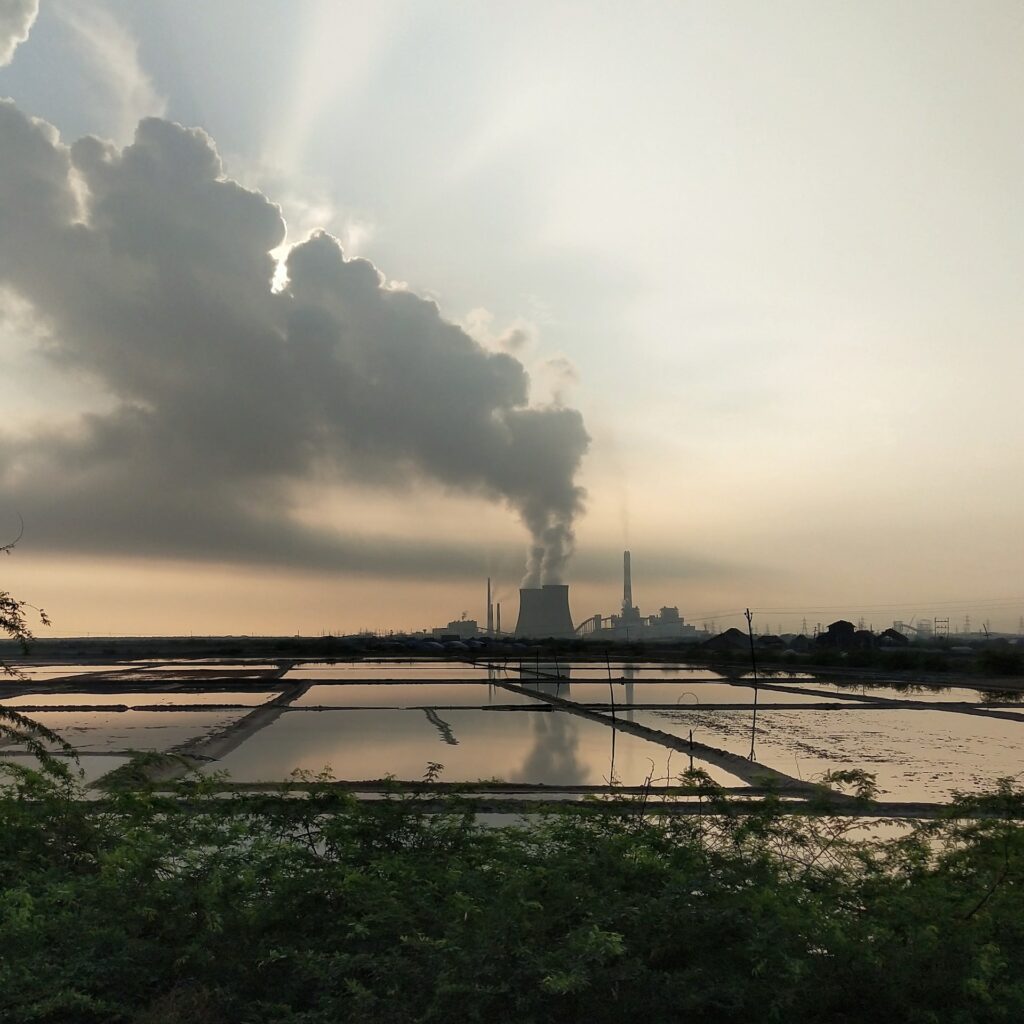Introduction – What Is Thermal Pollution
Thermal pollution is environmental damage that occurs when excess heat from industrial or energy-producing processes is introduced into the environment, often into bodies of water or air.
This additional heat will alter the existing environmental temperature and can negatively affect living organisms and ecosystems.
Thermal pollution can occur naturally, as with volcanoes and hot springs but is more commonly caused by power plants, mining operations, factories, wastewater facilities, radiators, and air conditioners.
In many cases, this waste heat is not removed before it enters the environment and interferes with normal thermal patterns by warming up ambient temperatures.

In aquatic environments, this temperature rise can upset oxygen levels, while in terrestrial environments, increased warmth may cause desiccation and evaporative water loss from the soil.
Therefore it is important to recognize what thermal pollution is and to implement strategies to reduce or avoid its occurrence to protect natural environments for current and future generations.
Thermal Pollution Is Distinct From, And Smaller Than, Global Warming
Thermal pollution primarily refers to the change in ambient water temperature due to human activities, such as the discharge of waste heat from industrial processes into nearby rivers, lakes, or oceans. It is considered a localized form of pollution because it affects specific bodies of water and surrounding ecosystems, rather than the entire planet.
The amount of thermal energy released into the environment through these processes is small in comparison to the vast amount of energy we receive from the sun or the scale of energy involved in global warming.
To put it in perspective, the energy from the sun that reaches the Earth’s surface is estimated to be about 173,000 terawatts, a truly colossal figure. In contrast, the total global energy consumption (all types) was about 20 terawatts as of 2021, or about 10,000 times smaller.
What Causes Thermal Pollution?
One of the main drivers of thermal pollution is human-induced activities. These activities include power plants, industrial processes, and even private households. Power plants are the primary contributor to thermal pollution as they use coal, oil, or natural gas to generate electricity.
This process releases hot water into the environment at temperatures much higher than it should be. Additionally, industrial processes such as manufacturing smelting operations, paper pulp, and dye production also release hot wastewater into local rivers and streams.
Furthermore, increased urbanization and population growth have led to an increase in private households which use pollutant technologies thermally. For example, electric heating systems and dishwashers discharge their waste heat directly into surface waters, further exacerbating thermal pollution in our cities’ rivers and streams.
How Does Thermal Pollution Impact The Environment?

Warmer temperatures interfere with the natural dissolved oxygen balance in these waters, affecting aquatic life directly and indirectly. For example, if fish and other aquatic organisms cannot find sufficient oxygen levels, they may suffer poor health and reproduce less frequently, resulting in long-term population decline.
It also threatens the sustainability of our fisheries resources by causing complications with native spawning species, which are used to particular temperature ranges for their development cycles to begin.
Besides the fishery impacts that thermal pollution can have on marine environments. It is also important to recognize the demands that increased energy consumption places on our planet’s limited resources, especially in countries that rely heavily on coal-burning power plants for energy supply. Thus, all nations need to recognize this threat and implement effective solutions that protect delicate ecosystems from further damage.
What Solutions Are Available To Address Thermal Pollution?
Thermal pollution can pose a major issue for both humans and animals alike. Individuals and government organizations can implement various solutions, and businesses to combat it.
Education about this kind of pollution is the first step you should take, as this will increase public awareness of the issue and help generate further action from all stakeholders. Additionally, businesses should reduce their contribution to thermal pollution in whatever way is most practicable for them—reducing emissions, preventing waste heat leakage, or adopting otherwise energy-efficient practices.
Governments have an important role to play in setting laws and regulations that ensure businesses act responsibly regarding thermal pollution.
Lastly, individuals can get involved by upgrading existing techniques or technologies, relying on old practices that create greater amounts of thermal pollution. For example, manufacturing and transportation, alongside smaller changes like turning down thermostat levels and washing clothes at cooler temperatures.
Thermal Envelopes And Insulation
One solution is to increase insulation drastically by improving the thermal envelope which will reduce heat loss from building interiors at the same time reducing the energy used to heat a home because of the way heat gets trapped efficiently. The thermal envelope of a house refers to the layers of insulation that are used to reduce the amount of heat lost from inside the house.
These layers can include the walls, floors, ceilings, windows, and doors of a house, as well as any insulation that has been installed. The thermal envelope is an important component in making a house energy efficient and comfortable.
How Can Individuals Help Reduce Thermal Pollution Levels?
Individuals can significantly reduce thermal pollution levels by becoming conscious about their daily choices in the household and beyond. This can include:
- Installing eco-friendly appliances that generate less heat, such as LED light bulbs and efficient kitchen appliances;
- Avoiding the use of high-temperature products that create liquid waste that is harder to treat;
- Purchasing more local produce to reduce distribution carbon emissions, being aware of the impact of product packaging, and communicating these values with friends and family.
Additionally, individuals should be mindful of their travel habits since vehicles are known to be one of the largest sources of thermal pollution.
If given a choice, avoid luxury vehicles that produce larger emissions, use public transport or take non-motorized modes such as biking whenever possible and carpooling when possible. Taking many smaller steps like this over time can go a long way in helping reduce overall levels of thermal pollution.
What Research Is Currently Being Conducted On Thermal Pollution?
Scientists worldwide are researching thermal pollution to better understand the processes and effects of this environmental issue. Researchers study how thermally polluted water destroys natural ecosystems, disrupts community livelihoods, and influences global climate change.
This includes investigations into the magnitude of such pollution, its sources and pathways, and methods for the prevention or mitigation of thermal pollution. For example, departments of fisheries study seasonal patterns in temperatures that may lead to a better understanding of local thermal pollution so that you can take proactive steps to diminish their impact.
Other research focuses on how changes in water temperature lead to modifications in a wide variety of species’ behavior and population dynamics, as well as genetic alterations among organisms living near thermally polluted areas.
Technological developments in equipment used for measurement also provide valuable data for further analysis. Through ongoing investigations into this form of water pollution, scientists have high hopes that they can improve our collective understanding of how human activities affect the environment on both large and small scales.
Conclusions
In conclusion, thermal pollution is a growing environmental problem caused by human activities and affects our water resources and the species within them.
Businesses, governments, and individuals all have an important role in reducing these effects, from adopting energy-efficient practices to making small changes like turning down thermostat fields and switching off lights when not needed.
Through research into this issue, scientists are working to better understand its magnitude and effects so that you can take proactive steps to prevent further damage.
